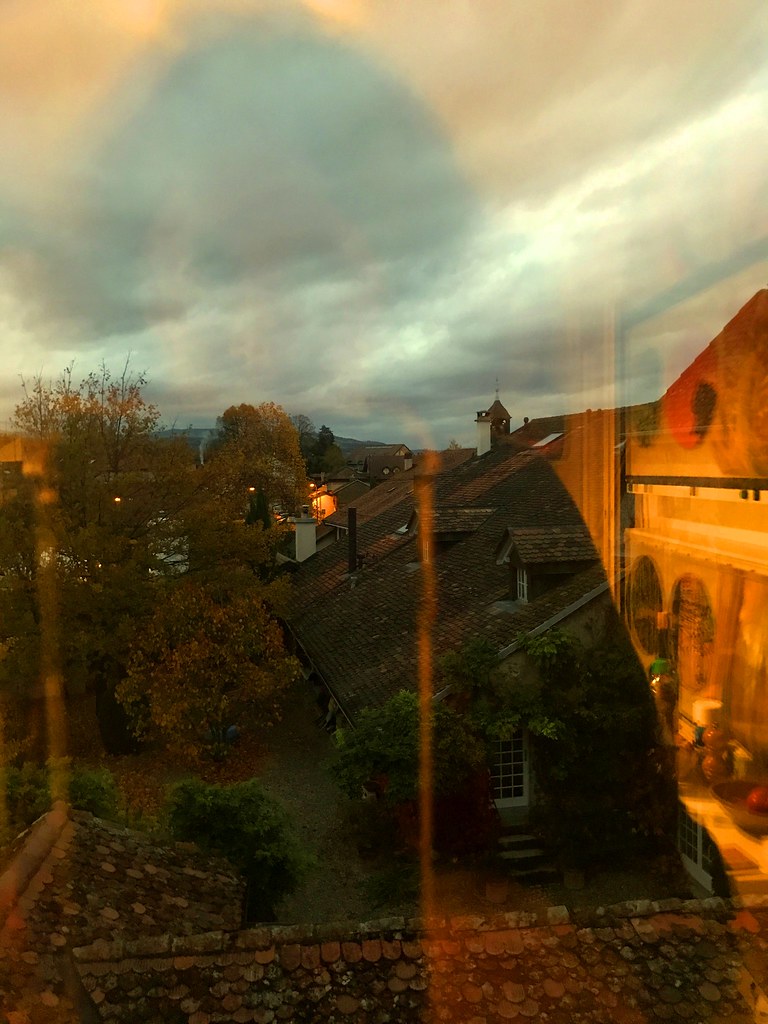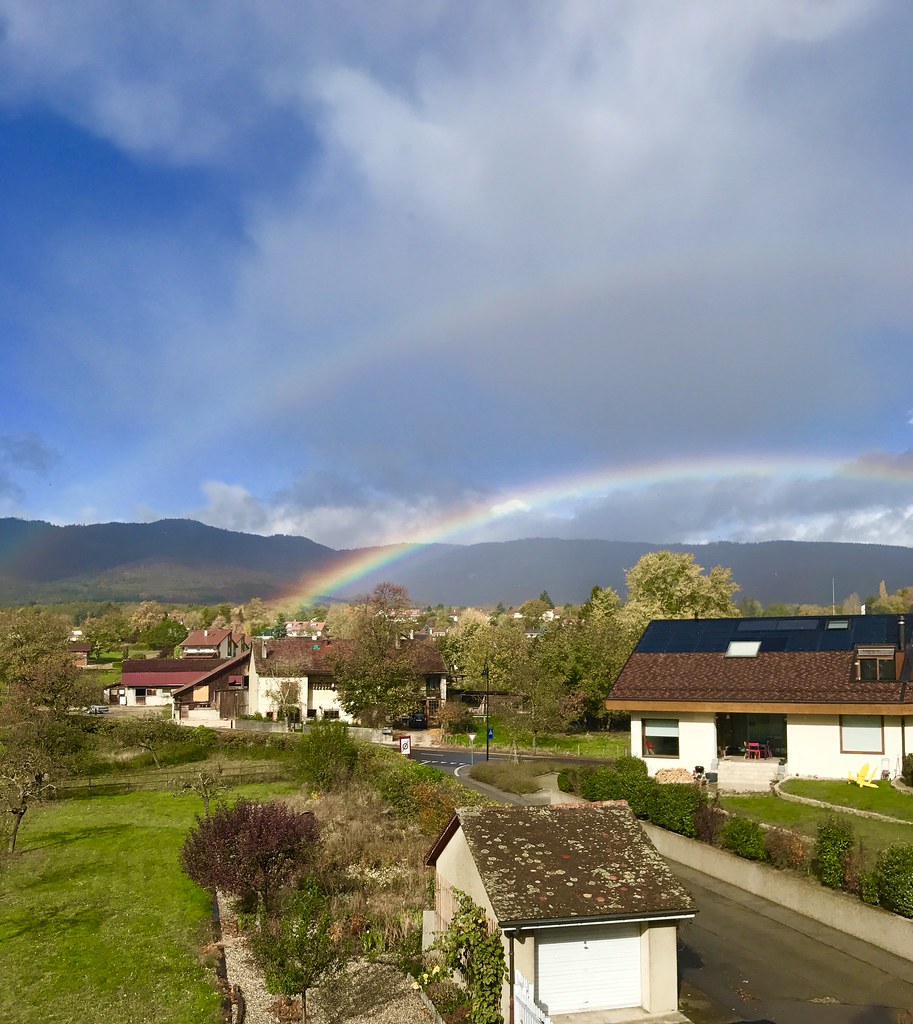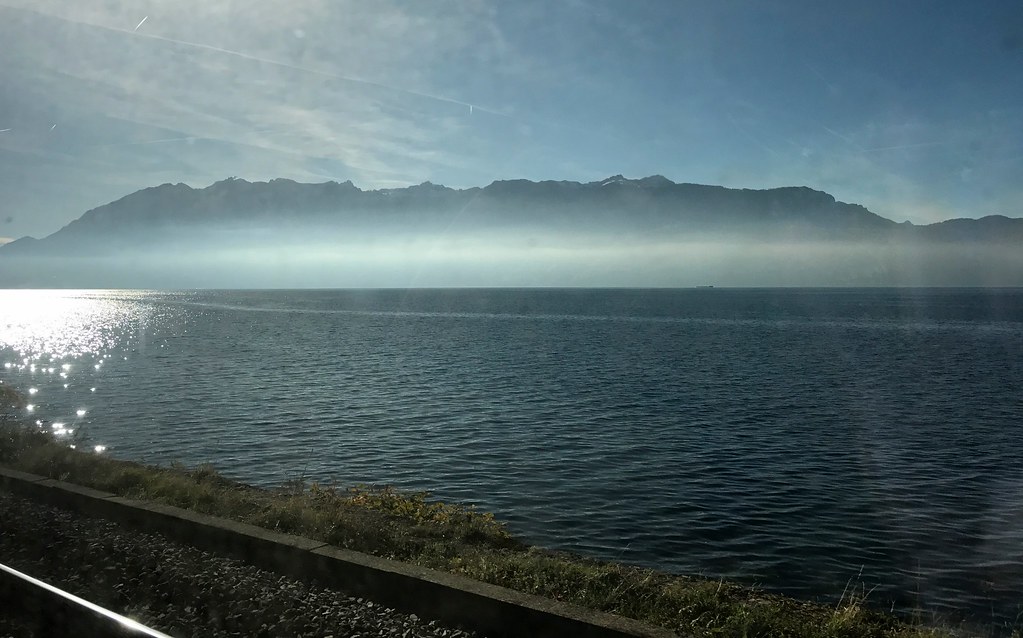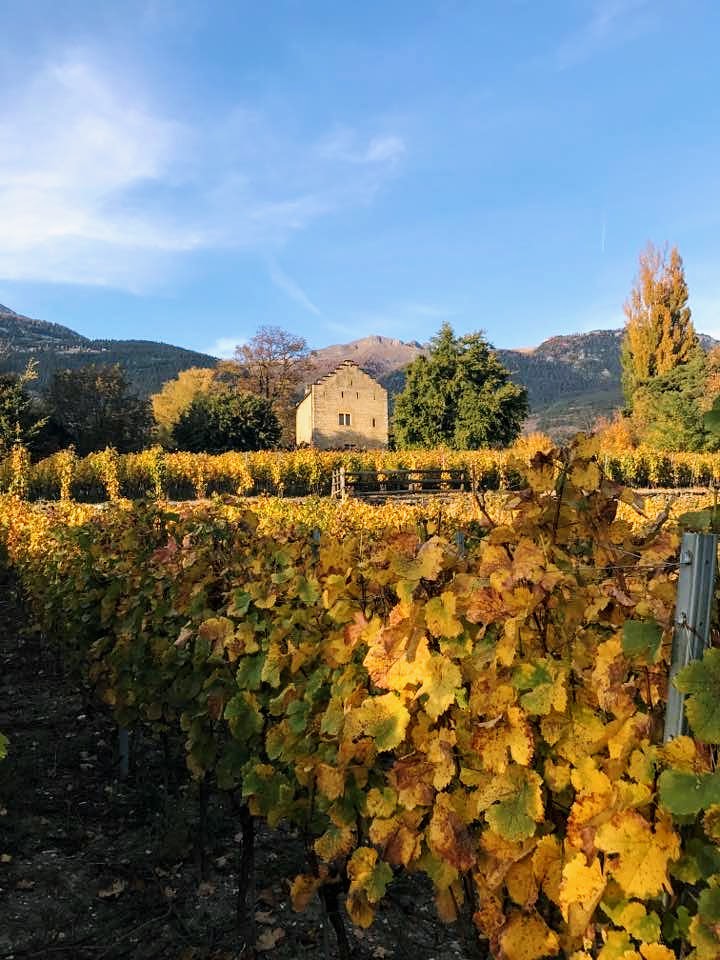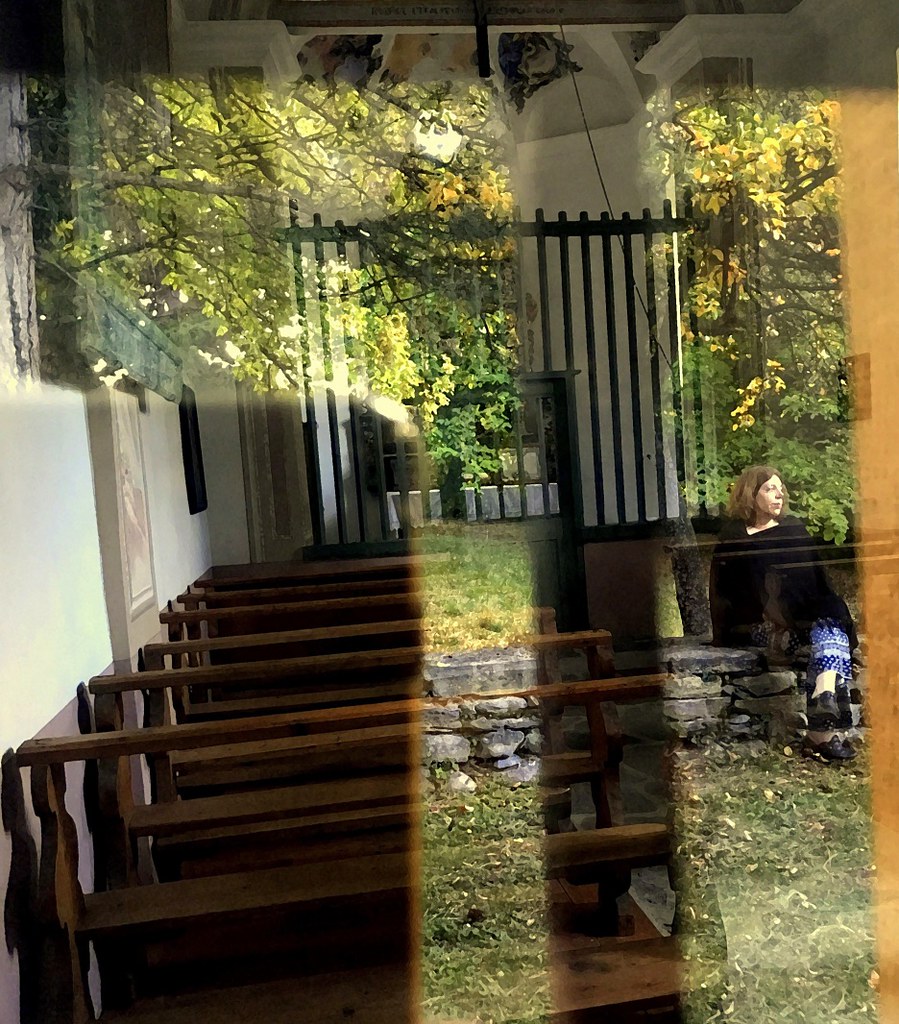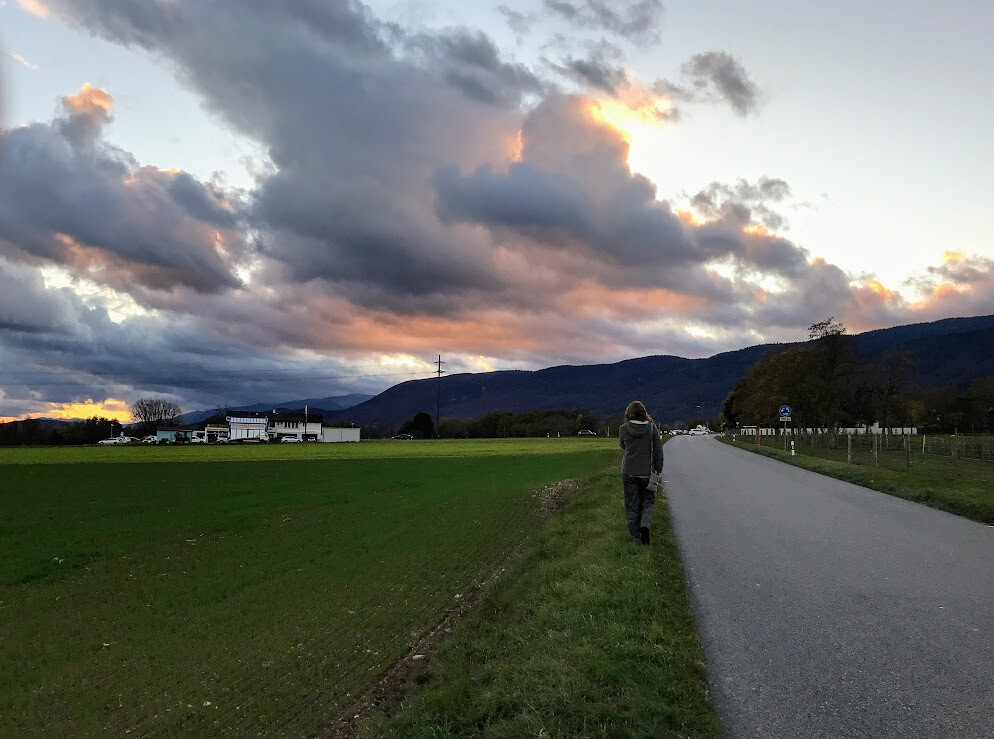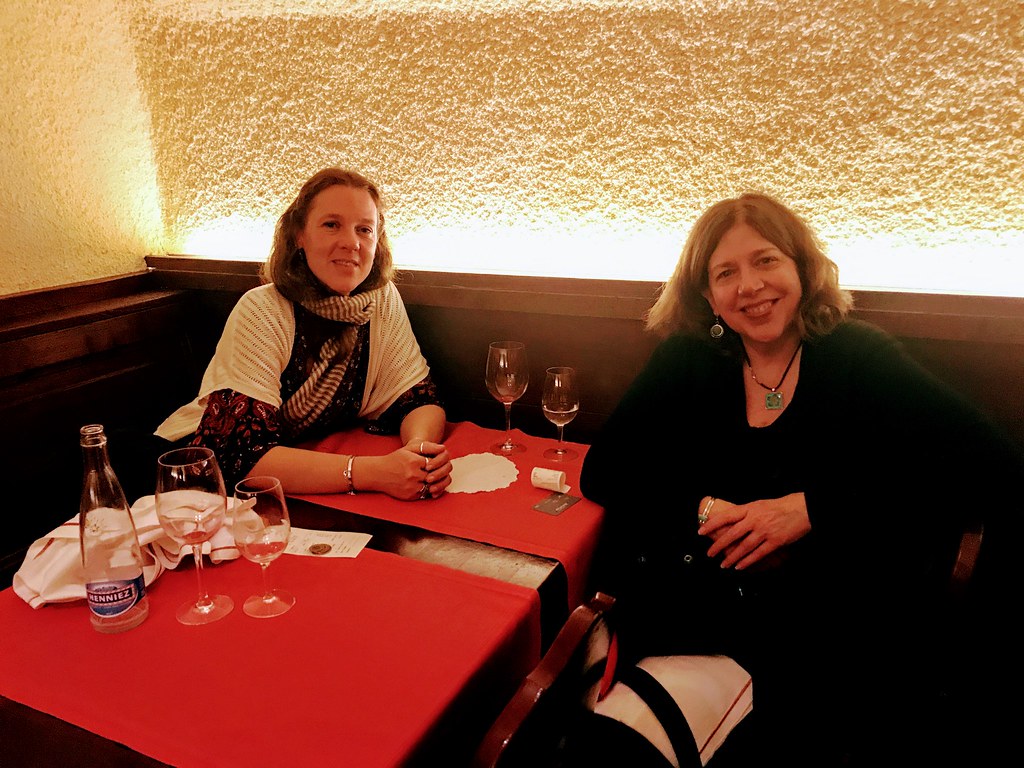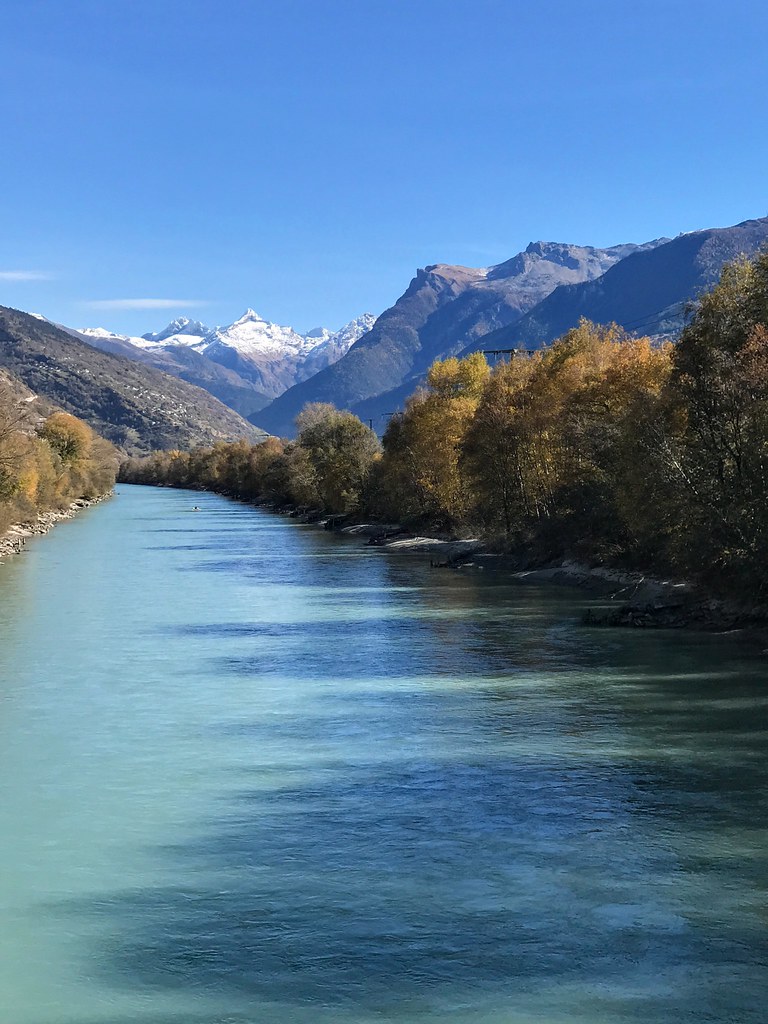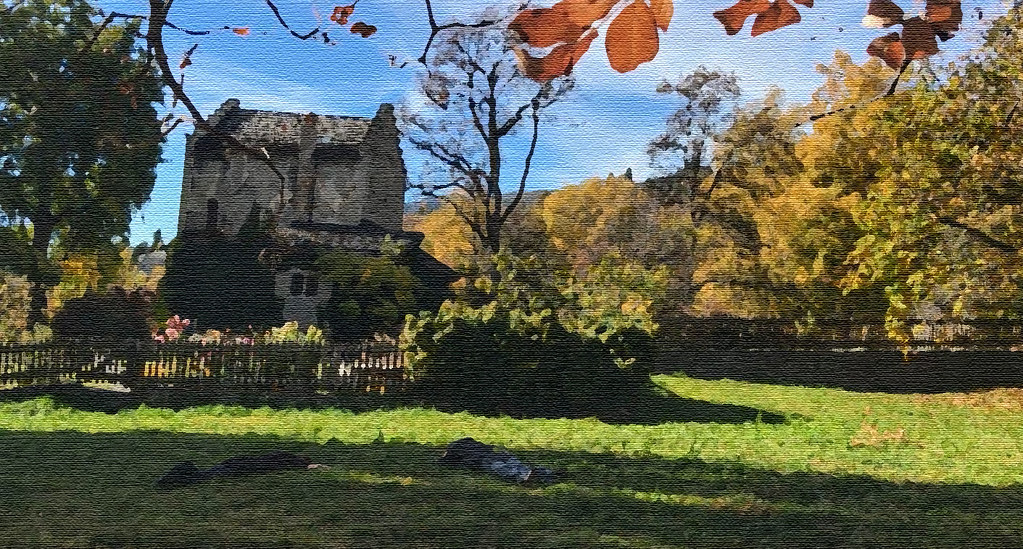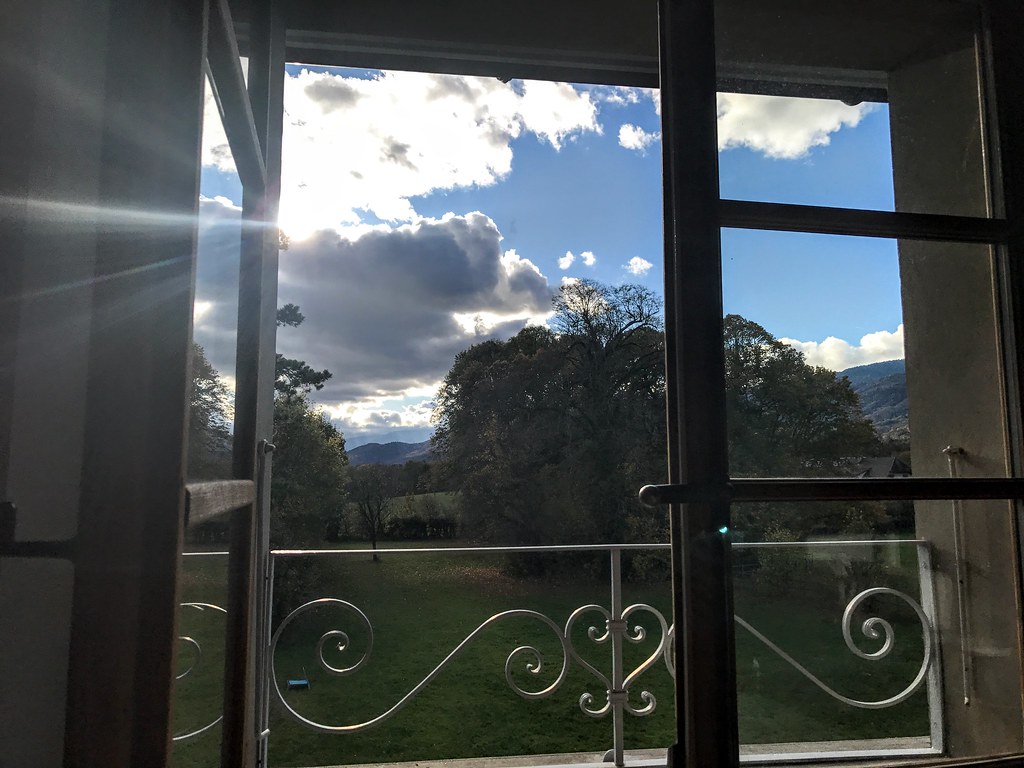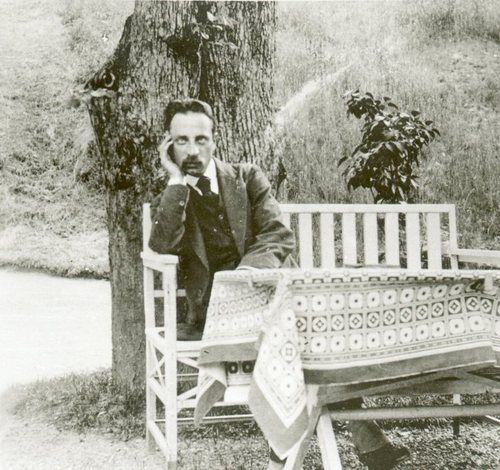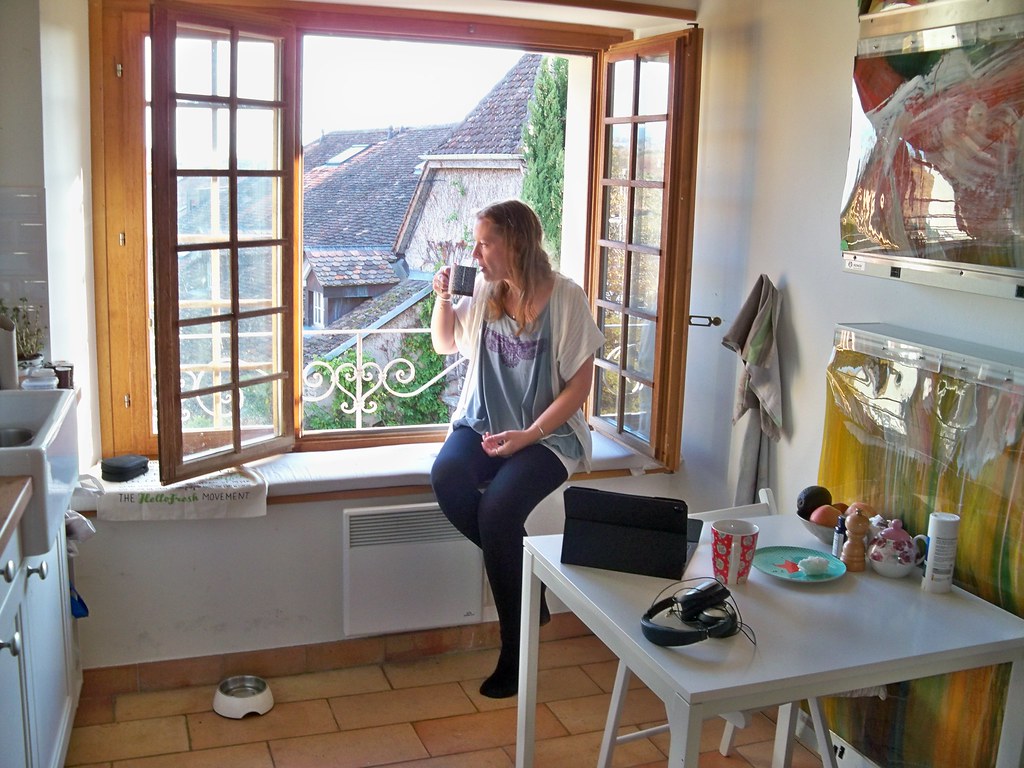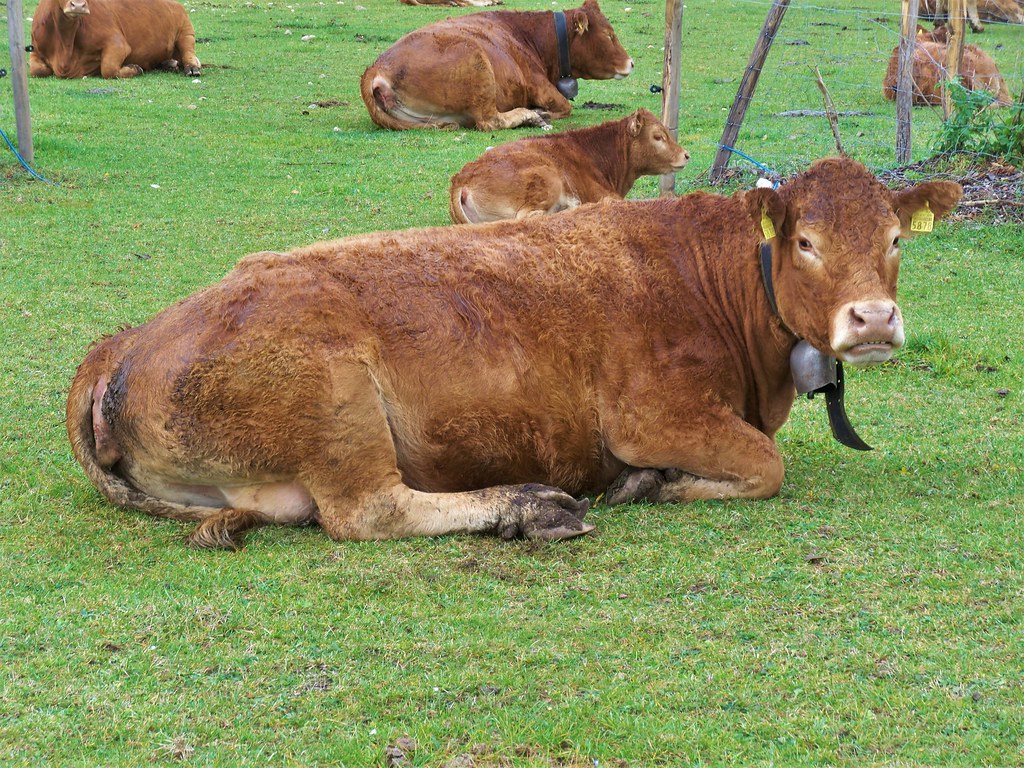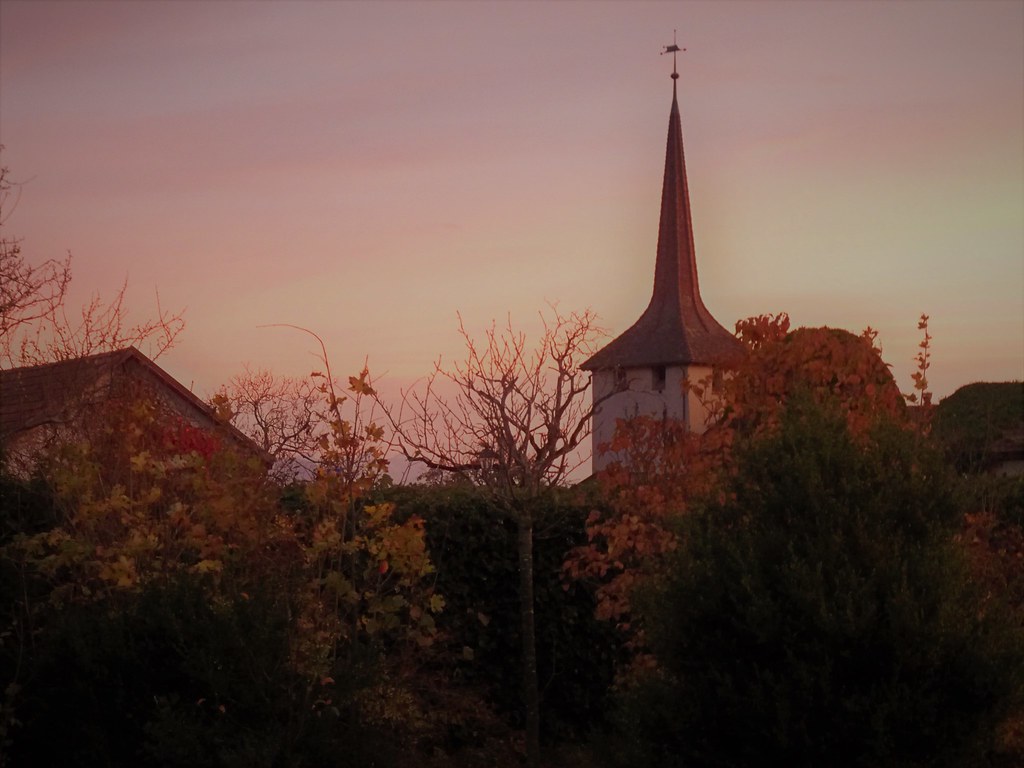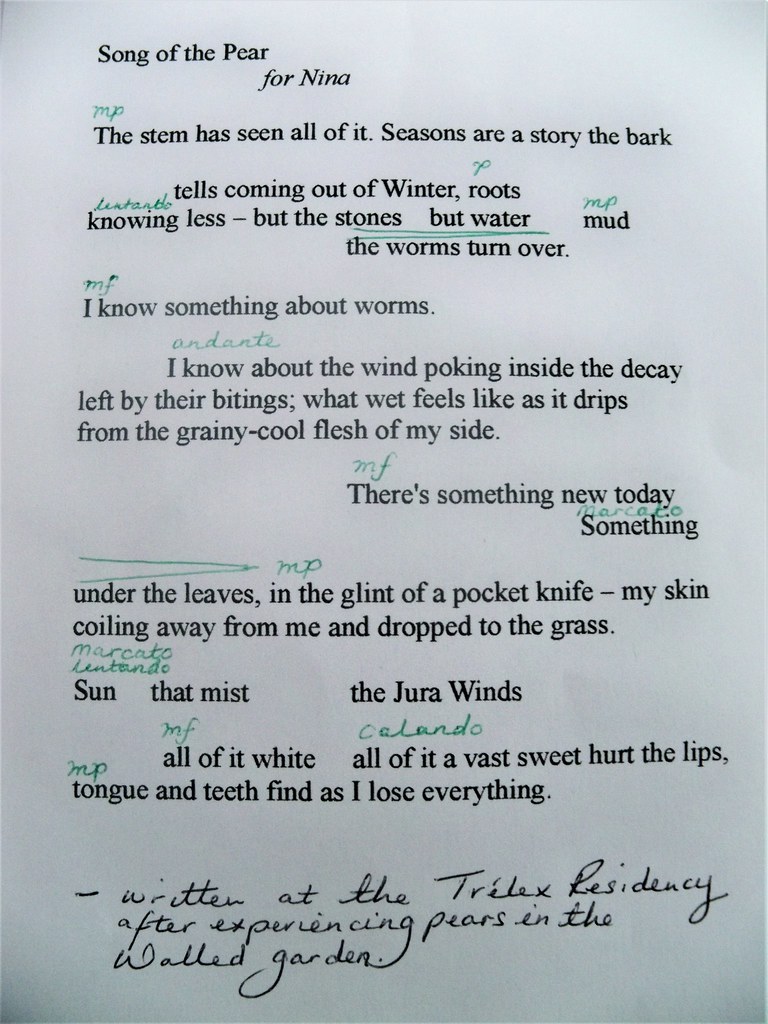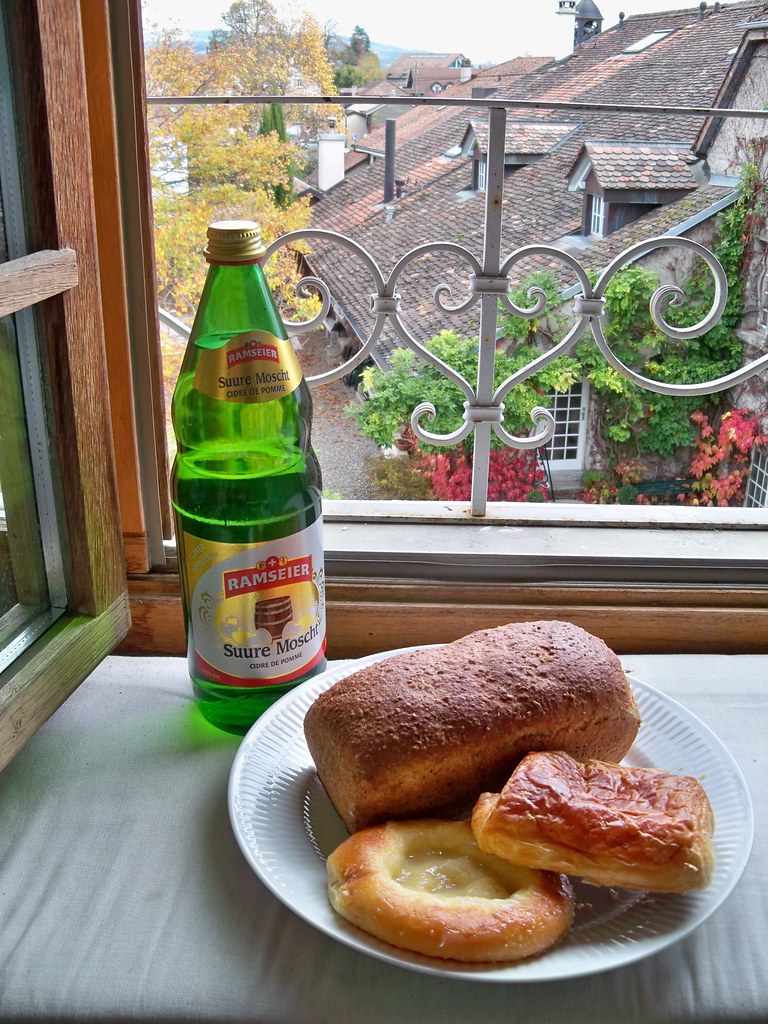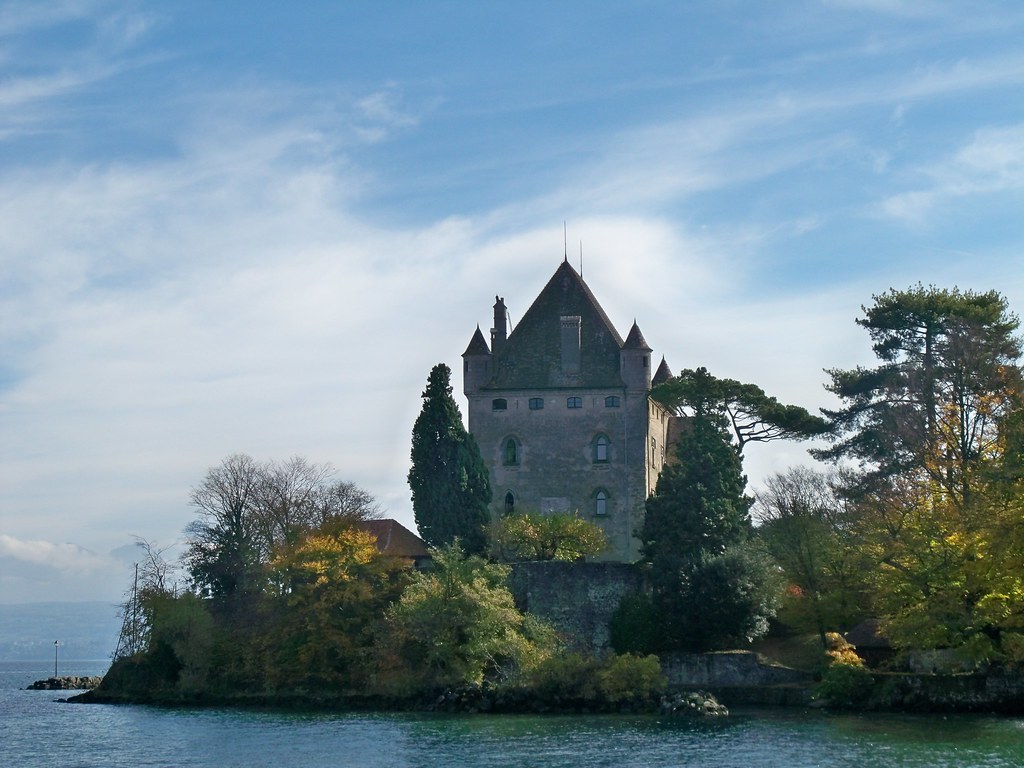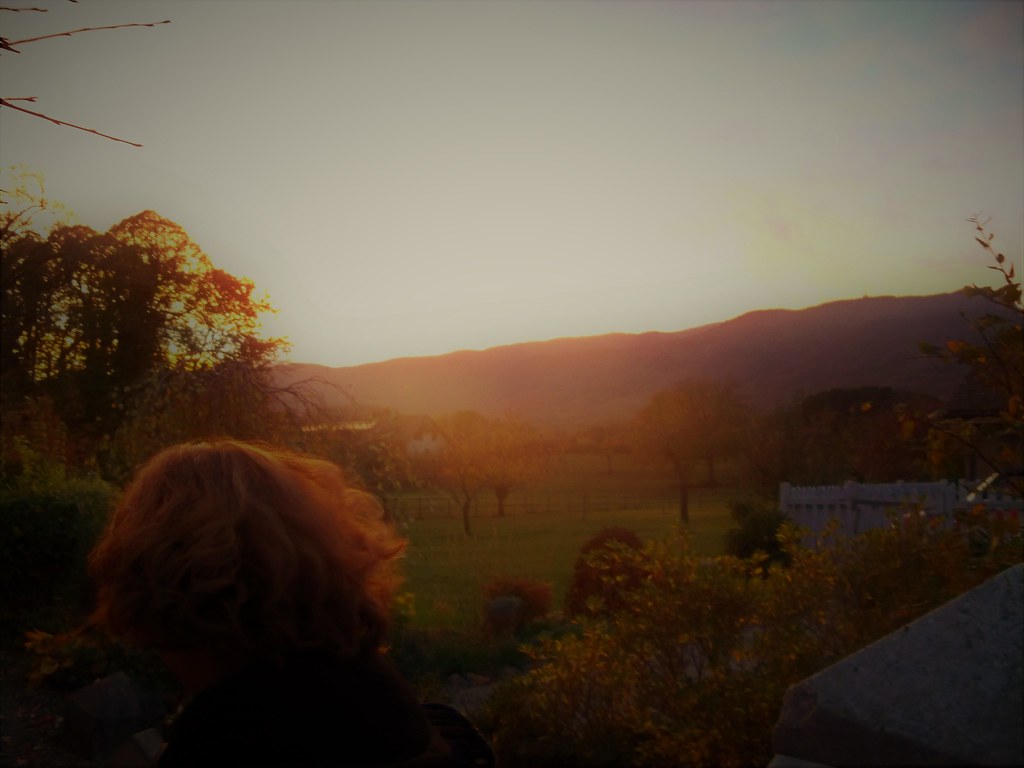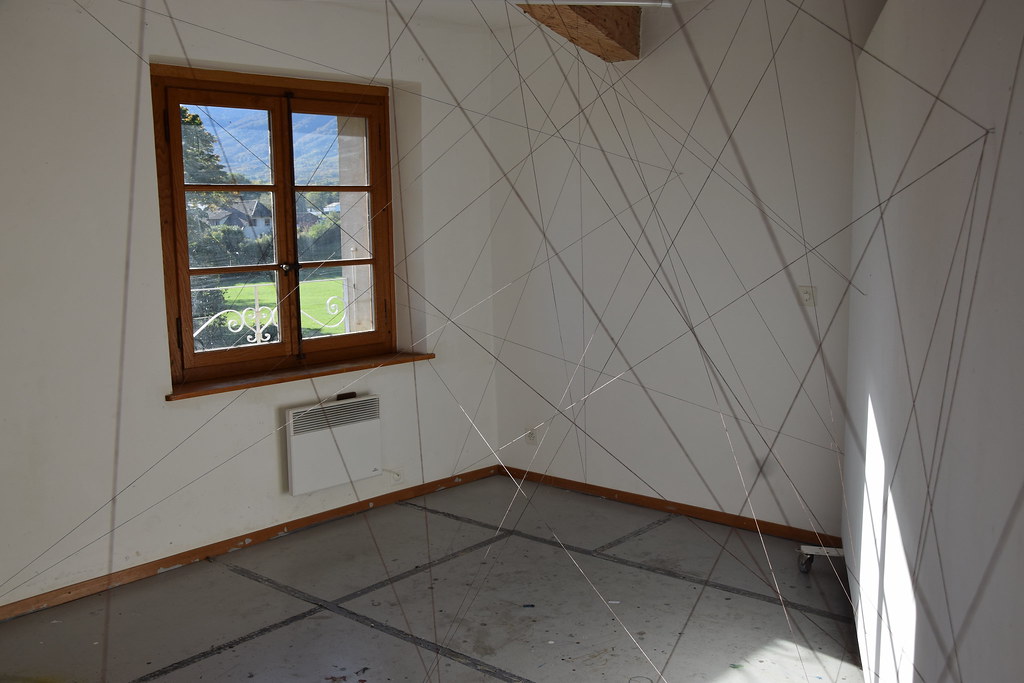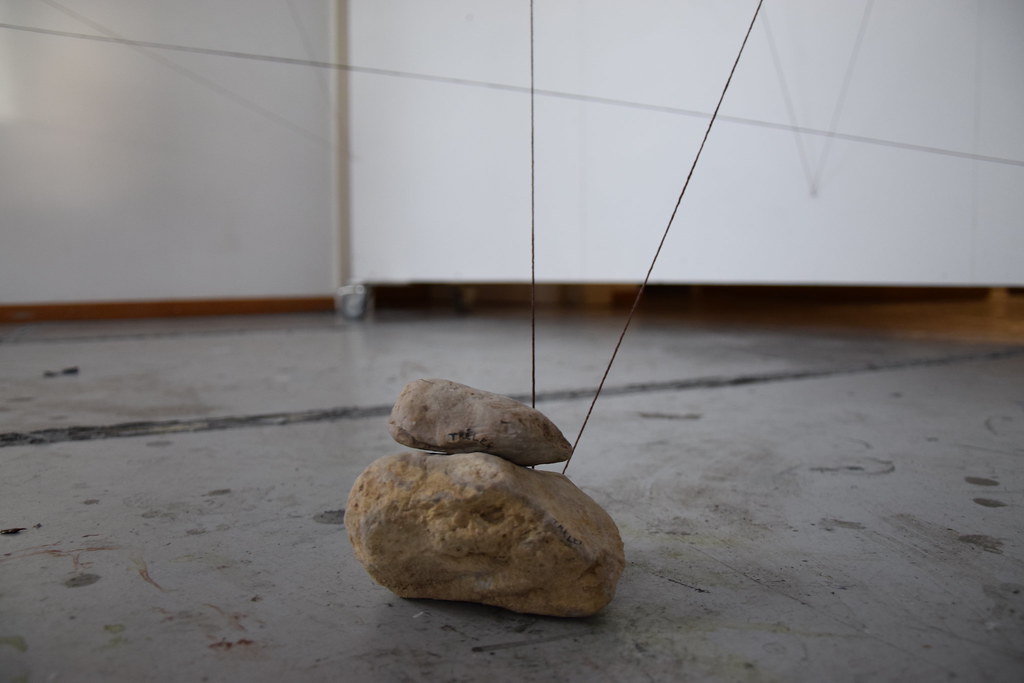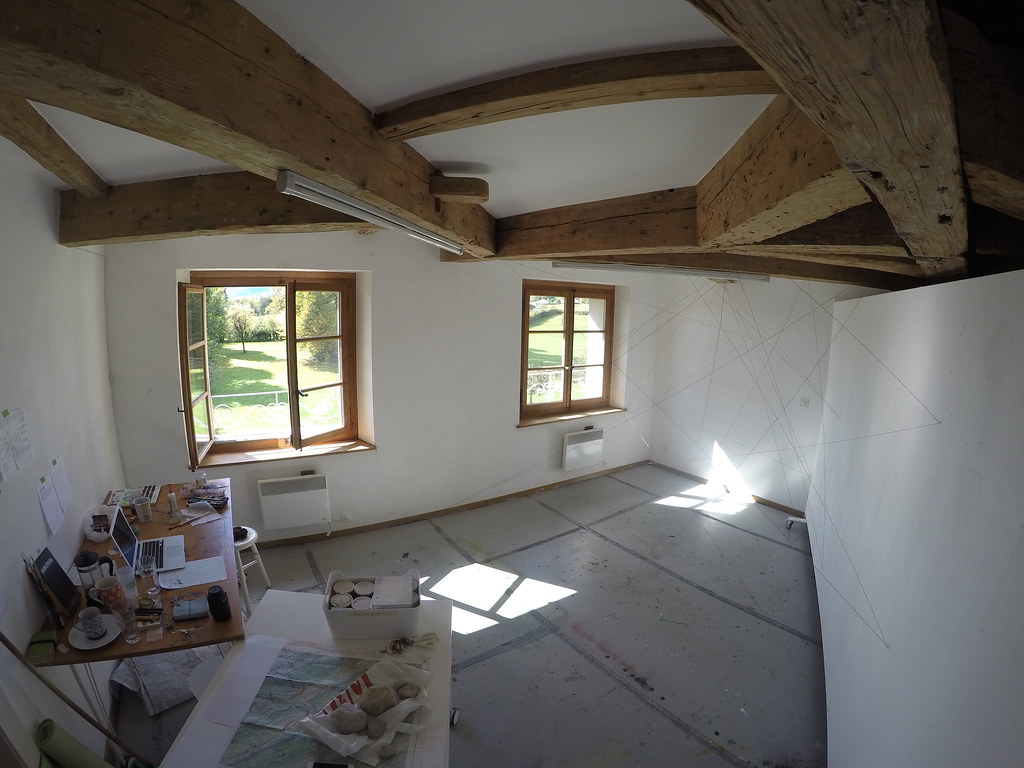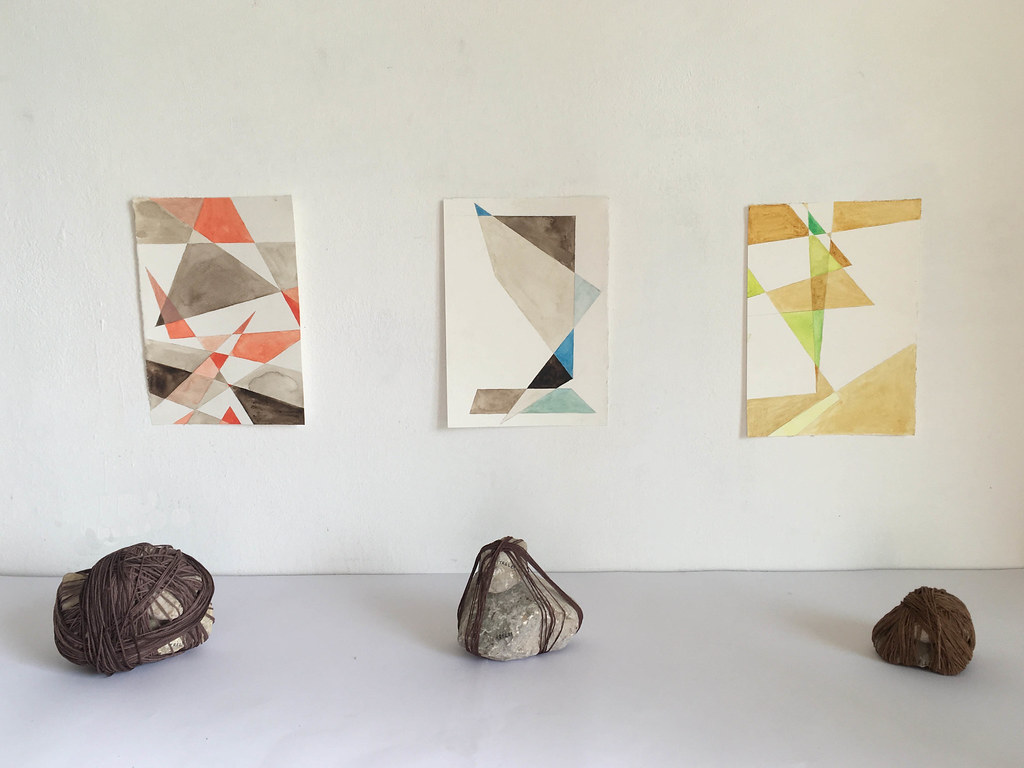31 Oct - 23 Nov 2017
At the heart of art: my residency in Trelex
Some things in life only make sense in the oddest of ways. Circles, rhythm, synergy, seasons, hope. That was my experience of learning of the last-minute opportunity to visit Trelex. I wanted to go but there were also many very logical reasons not to. Still, I listened to the invitation and there I was a few days later on a train past Lake Geneva, amazed by Mont Blanc crystal clear in the distance.
I was stuck by the beauty and the colours when I arrived at the end of October. The deep red of the leaves, the amazing blue of the sky. The garden turning gold around the house, the steady presence of the mountains in the distance. I began to know the sounds: the cow bells in the nearby fields, the church bells chiming, the clock striking the hour, the train trundling past the station. Then to know the shape of those hills; to expect their steep slopes and snowy peaks. I absorbed them deep into me, by looking first, then by walking. Long walks from one village to the next, whispering my stories to the thick-barked trees, listening to the songs of the bright autumn leaves, finding my way to peaks and down valleys, which as the weeks went on became covered ankle deep in the first snows. It did not stop me, still I walked, finding my way through the now hidden footpaths of the Jura, watching the snow melt into rivers, then recrystallise, reform, seeing the roots and the moss of the trees covered and uncovered, seeing my breath hot at each bend. Resting in mountain cabins to drink tea, talk to the owners, edit pages, ride the mountain train back to Trelex.
For me this is writing and how I knew I wanted to teach myself to write: not from the head, but from the heart. A process which had already begun but which I could not have done at this depth without the container of Trelex, the endless possibilities for wandering, the window and the desk waiting when I returned. Each morning my heart was out there somewhere and I went looking for it, shutting the door on eager and much loved Talisker, setting out to find myself, resolve myself and in the process find my words, find my writing. Carefully uncovering, like removing the first layer of snow from an untouched bench: what needed to be said.
And so, my days blended into routines of long walks in the forest, talking with Talisker, interesting chats and a new friendship with fellow resident Shameera, exploring my writing practice, not from the outside in, but from the inside out, and all the while knowing that my progress could not be measured by the number of words on the page or the number of completed projects. I did make progress in writing projects and in scoping out ideas, but that was not my measure for success. Success instead came from finding myself, feeling strong in myself, knowing myself and writing that came from that place. Each time I was drawn into ambition and structure, I pulled myself back outside, onto the paths, looking for nature, rhythm, flow.
I fell in love with the trees around St Cergue, the beautiful forest and the long winding, meticulously signposted paths of the Swiss Jura. There in those walks, over and over again, writing at its deepest level, creation at its deepest level happened.
I came to Trelex by chance, or perhaps I came because it was exactly where I was meant to be. Either way I am grateful for ending up at the door of Nina’s house, for having the freedom to explore my writing practice in the way I needed to at that time, to Nina for offering that space freely with no judgement, critique, or pressure.
I have always believed art is about process as much as about finished product but in our results driven society I have had trouble to make that a reality. Yet, I know that it is on that level that art has the potential to heal the artist and in doing so heal the world around him or her. A finished product is a nice end point, just like the summit of the Dole in the Jura mountains or the top of Mont Blanc, but the journey there is where the value lies. In Trelex, I could hold that knowing close each day and start to believe in it. So rare in our Western world of products, deadlines, to be able to go at the pace we need to go at, to uncover what we need to uncover, to dig deep, then dig some more. I left Trelex knowing this truth even more so and feeling more confident in myself as a writer, that this was me and this was how to feed and nourish my artist.
While wandering the Jura, a poem I wrote five years ago in Burma came alive to me, circling in and out of my head. I took many photos and videos as I walked and this video poem was the outcome. For me it captures the beauty of the forests and the understanding I found there: we are so often searching outside for what is already in us all along. Still we have to search over and over again. That is living and there it is. Walking the paths around Trelex it was so clear: there is joy in that search too. In fact, that is exactly where the heart is.
Facebook: @catrionaknapmanwriting
Some things in life only make sense in the oddest of ways. Circles, rhythm, synergy, seasons, hope. That was my experience of learning of the last-minute opportunity to visit Trelex. I wanted to go but there were also many very logical reasons not to. Still, I listened to the invitation and there I was a few days later on a train past Lake Geneva, amazed by Mont Blanc crystal clear in the distance.
I was stuck by the beauty and the colours when I arrived at the end of October. The deep red of the leaves, the amazing blue of the sky. The garden turning gold around the house, the steady presence of the mountains in the distance. I began to know the sounds: the cow bells in the nearby fields, the church bells chiming, the clock striking the hour, the train trundling past the station. Then to know the shape of those hills; to expect their steep slopes and snowy peaks. I absorbed them deep into me, by looking first, then by walking. Long walks from one village to the next, whispering my stories to the thick-barked trees, listening to the songs of the bright autumn leaves, finding my way to peaks and down valleys, which as the weeks went on became covered ankle deep in the first snows. It did not stop me, still I walked, finding my way through the now hidden footpaths of the Jura, watching the snow melt into rivers, then recrystallise, reform, seeing the roots and the moss of the trees covered and uncovered, seeing my breath hot at each bend. Resting in mountain cabins to drink tea, talk to the owners, edit pages, ride the mountain train back to Trelex.
For me this is writing and how I knew I wanted to teach myself to write: not from the head, but from the heart. A process which had already begun but which I could not have done at this depth without the container of Trelex, the endless possibilities for wandering, the window and the desk waiting when I returned. Each morning my heart was out there somewhere and I went looking for it, shutting the door on eager and much loved Talisker, setting out to find myself, resolve myself and in the process find my words, find my writing. Carefully uncovering, like removing the first layer of snow from an untouched bench: what needed to be said.
And so, my days blended into routines of long walks in the forest, talking with Talisker, interesting chats and a new friendship with fellow resident Shameera, exploring my writing practice, not from the outside in, but from the inside out, and all the while knowing that my progress could not be measured by the number of words on the page or the number of completed projects. I did make progress in writing projects and in scoping out ideas, but that was not my measure for success. Success instead came from finding myself, feeling strong in myself, knowing myself and writing that came from that place. Each time I was drawn into ambition and structure, I pulled myself back outside, onto the paths, looking for nature, rhythm, flow.
I fell in love with the trees around St Cergue, the beautiful forest and the long winding, meticulously signposted paths of the Swiss Jura. There in those walks, over and over again, writing at its deepest level, creation at its deepest level happened.
I came to Trelex by chance, or perhaps I came because it was exactly where I was meant to be. Either way I am grateful for ending up at the door of Nina’s house, for having the freedom to explore my writing practice in the way I needed to at that time, to Nina for offering that space freely with no judgement, critique, or pressure.
I have always believed art is about process as much as about finished product but in our results driven society I have had trouble to make that a reality. Yet, I know that it is on that level that art has the potential to heal the artist and in doing so heal the world around him or her. A finished product is a nice end point, just like the summit of the Dole in the Jura mountains or the top of Mont Blanc, but the journey there is where the value lies. In Trelex, I could hold that knowing close each day and start to believe in it. So rare in our Western world of products, deadlines, to be able to go at the pace we need to go at, to uncover what we need to uncover, to dig deep, then dig some more. I left Trelex knowing this truth even more so and feeling more confident in myself as a writer, that this was me and this was how to feed and nourish my artist.
While wandering the Jura, a poem I wrote five years ago in Burma came alive to me, circling in and out of my head. I took many photos and videos as I walked and this video poem was the outcome. For me it captures the beauty of the forests and the understanding I found there: we are so often searching outside for what is already in us all along. Still we have to search over and over again. That is living and there it is. Walking the paths around Trelex it was so clear: there is joy in that search too. In fact, that is exactly where the heart is.
Facebook: @catrionaknapmanwriting
Twitter: @catrionaknapman
Instagram: @catrionaknapman
